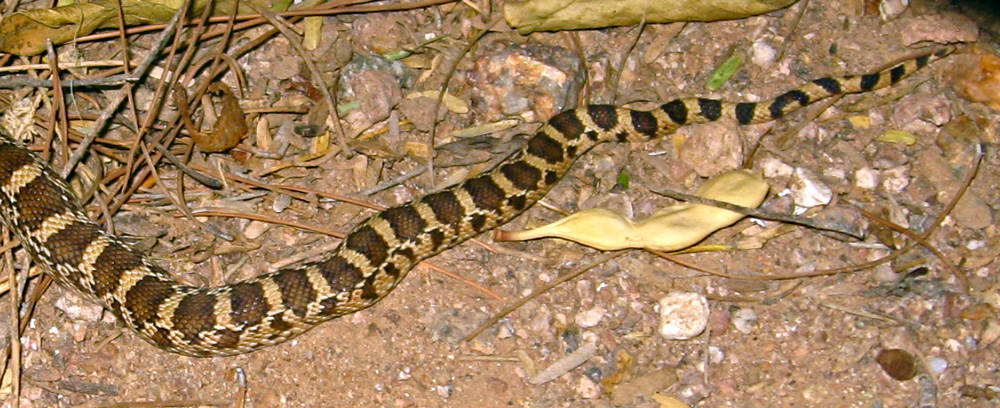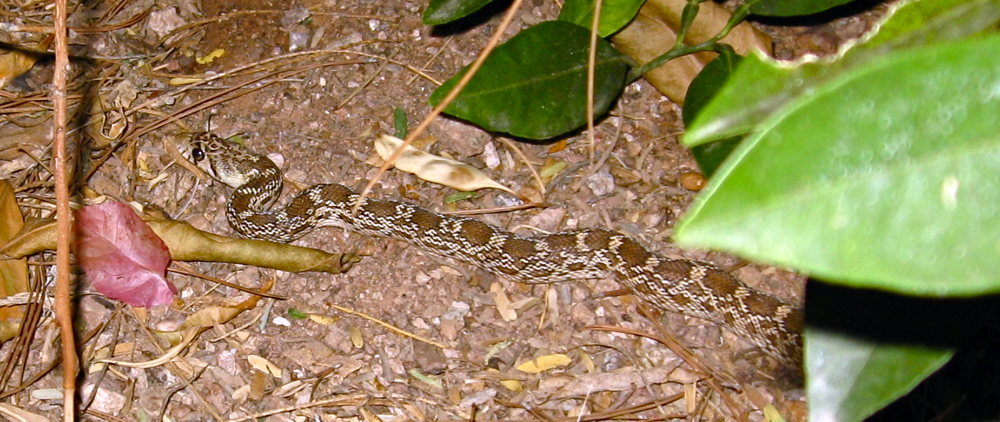And it goes on…
It always makes me happy to see infant animals in the yard; it means the world is rolling along, as it should, species replenishing themselves and the natural systems functioning. This is why people love seeing babies — it gives the same satisfaction: that the world is carrying on as usual, despite everything, and because of everything. I feel it when seeing tiny cottontails hidden out in the open in their form, hatchling praying mantids swarming out of their bread-loaf egg-case, nest-cached hummingbirds waiting for mother to dispense nectar-and-gnat soup, even young raccoons trundling behind their mother, wreaking havoc in the yard, and young serpents making their way on the soil, searching for prey something the girth of a pencil can handle.
In the warm desert, a lot of this new life begins in fall, our functional second spring: ahead is the cool weather with its longer nights for foraging, the scorching hot temperatures are behind us. Monsoon is winding down too, a time when the intermittent deluges of late summer storms kick-start the food web after the stingy, dry weeks of early summer. This moisture encourages hatching and births, vegetation sprouts everywhere, and arthropod and rodent pray abounds, generously giving hungry young animals a solid start.
Yesterday, it was young lizards: the herb and vegetable garden we planted this year with its slightly raised-bed construction, bounded by hollow cinder blocks and stocked with minute invertebrate-rich compost, has proven to be a successful nursery for both Tiger whiptails and Ornate tree lizards. While watering, I watched three young tree lizards simultaneously hunting ants and other tiny prey: they would dash forward, whip out their tongue, swallow, and then slowly, sinuously wave their tails back in forth in an undulating movement — a slow-motion lash — that just looked like someone rubbing their hands in self-satisfaction. Each lizlet was only 2 inches long. A young whiptail, larger by species, but still young — its long tail was still faintly electric blue — was also puttering around in the vicinity, taking advantage of my shadow to hang out in the coolness of some overflow water from the beds.
This morning it was the young Gopher snake (above), about a foot long, but only as big around as a finger. Gophers are common in our yard, but I always admire how their yellow and chocolate pattern shifts subtly from head to tail, from yellow-on-brown to brown-on-yellow. You can’t tell where the change-over happens, but the tail is positively different from the head.
but the tail is positively different from the head.
<< The change-over zone (Photo A.Shock)
Unfortunately, this beautiful pattern is the reason so many gopher snakes are killed by fearful people: it’s reminiscent of the diamond-pattern on rattlesnakes. Gophers (or bull snakes) are especially welcome here as efficient rodent predators; our part of the Phoenix area has been plagued with roof-rats for a decade or so.
This young’un in the photo above saw me before I saw it, and hid its head under an orange leaf, leaving the full length of its boldly patterned body out in the open. Here it is, sneaking slowly away in the hopes the looming predator (me) doesn’t notice.


Seeing snakes is excellent, baby snakes, even better. We have a ton of young lizards, too, but I don’t often see snakes in my yard. I have so much open space, you know, not a lot of ground cover.
wasn’t it you allison, who built rockpiles for lizards? I tried some and the lizards dash there from their hiding spots under the lip of the raised veg garden beds whenever I start splashing water around. They HATE getting hit by droplets. Does it do their body harm–lower the temp to dangerous levels? anyway they like their rockpiles.
Cool post and cool snake. I work to humanely relocate rattlesnakes in the Phoenix area, and I would say that a good quarter to half of the rattlesnakes I get called to capture end up being gophersnakes, or other harmless snakes with a striped pattern.
And Nightsnakes are “baby rattlers” or “sidewinders” according to folks, too. Explain it was probably an adult nightsnake they saw, and often they look disbelieving and disappointed, even though nightsnakes are cool, too — and are even mildly venomous. These are times when mimicry of the fierce by the meeker works to their disadvantage.
Bryan, keep up the good work looking after Phoenix’s rattlers.
Sue, we have rocks in piles, for sure, and everything loves them, lizards and snakes and no doubt less appealing neighbors like scorpions and rats. As for lizards hating to be sprayed, I have no clue. Flight response triggered by sensation of touch from an unknown source?
[…] working the yard, keeping less appealing scurrying neighbors in check. It means there’s some vestige of a natural system at play here, so I can’t truly begrudge them a baby cottontail or a quail egg, or […]